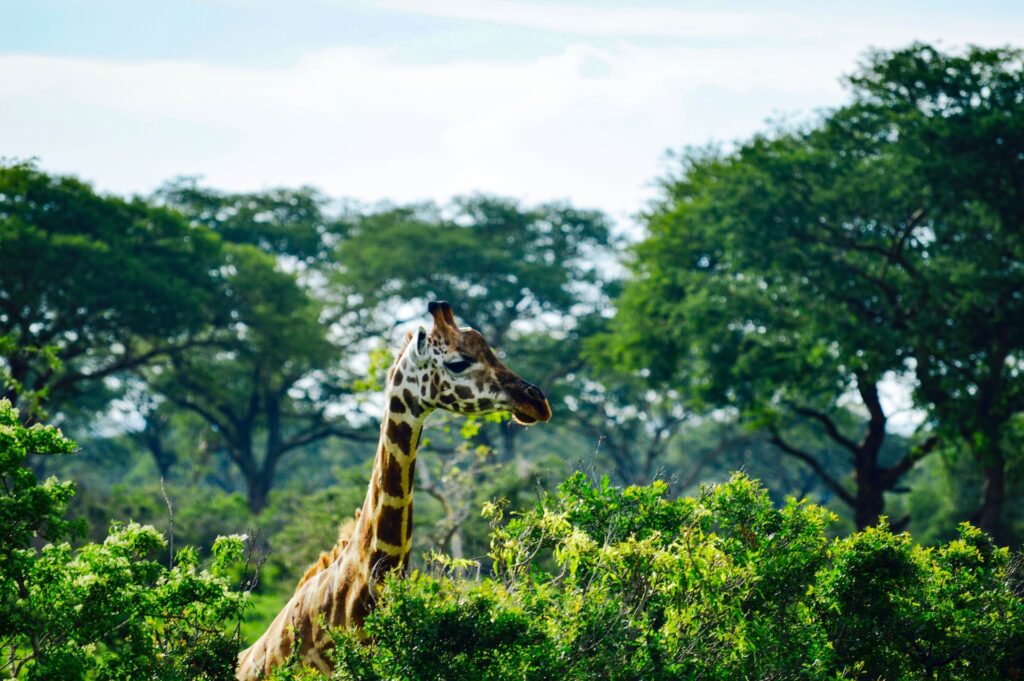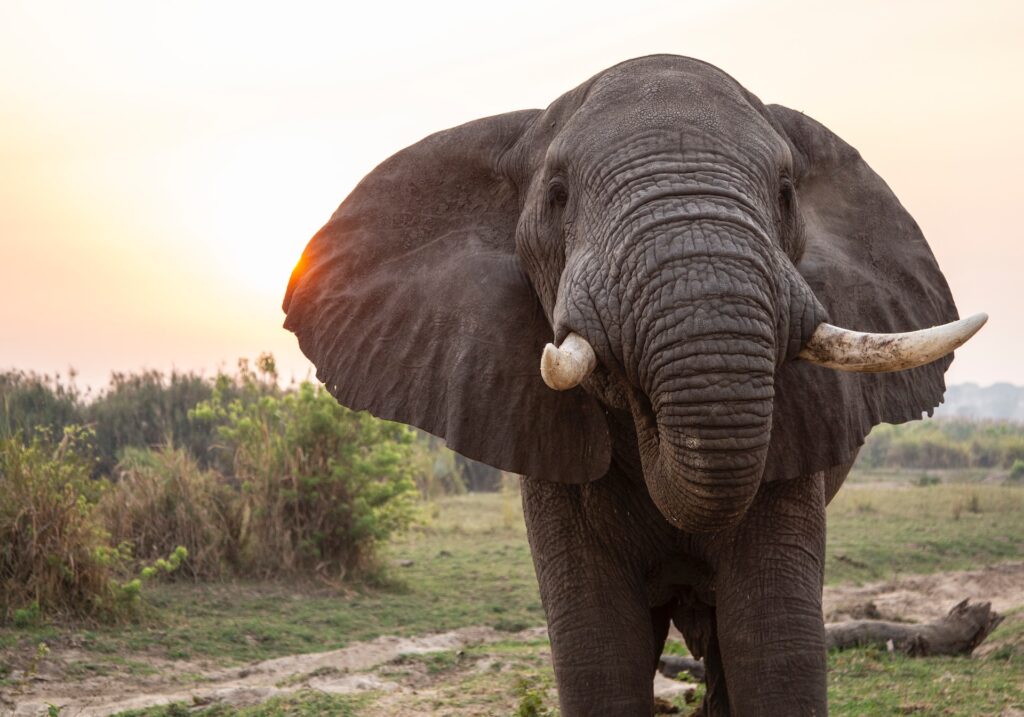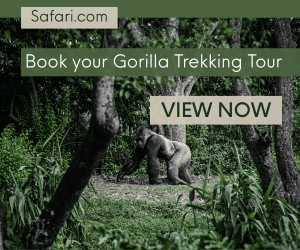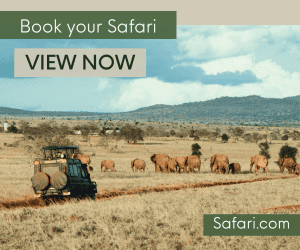Table of Contents
- Step 1: Start with a budget for your self-drive safari
- Step 2: Think about what you would like to see
- Step 3: Pick a destination for your self-drive safari
- Step 4: Think about hiring a ranger
- Step 5: decide on duration and accommodation
- Step 6: Make your reservations!
- Need help with planning a self-drive safari in Uganda?
Welcome to this complete guide to planning a self-drive safari in Uganda. I’ve been on more African self-drive safaris than I can remember in each of Uganda’s stunning national parks, and I want to provide you with detailed information about how to plan your upcoming adventure.
You can work through this guide step-by-step as you plan your safari independently, ensuring that you cover all bases when planning your dream trip to the African savannah.
So, without further ado, here’s everything you need to know about planning a self-drive safari in Uganda.
Step 1: Start with a budget for your self-drive safari
Okay, so the first and arguably most important step when planning a safari in Uganda is to begin with a budget. But how much do Ugandan safaris cost?
Well, the cost of any safari differs significantly as there are so many variables to consider. But realistically, you can spend anywhere between $300 and $5,000 (excluding flights) on a Ugandan safari, which is why you need to decide on the budget that you have available to you.
The costs that you need to plan for include the following:
- Park entrance fees: The cost of park entrance fees in Uganda for foreign visitors is currently $40 per day (for most parks). You need to pay the fees per 24 hours that you’re in the park, so it’s handy to work out the most efficient way to plan your safari so you can be inside the park for as little time as possible, so you can save on fees! Be sure to check the current park entrance fees as listed by the Uganda Wildlife Authority to consider how much it will cost you to enter the respective parks.
- Vehicle hire/fuel: It costs between $50 and $150 per day to hire a 4WD for a self-drive safari. On top of this, you will need to plan for the cost of fuel, which in Uganda is currently between $1 – $2 per liter. As is the case with fuel costs all around the world, this is much higher than it has been in the past! AJ Tours and Travel offer affordable vehicle hire for self-drive safaris in Uganda and are a great option if you’re planning to arrange a safari yourself in Uganda or anywhere in East Africa.
- Food & accommodation: It won’t surprise you to learn that food and accommodation in and around Ugandan national parks are fairly expensive. For exclusive safari lodges and campsites in the wilderness, you are looking at costs exceeding $250 per person per night. It’s not cheap to head on a luxury safari! However, if you’re happy for something a little more basic but would still like the experience of being in the wild, there are budget safari camps in each of Uganda’s parks, all of which come in at less than $50 per night. So, it is possible to arrange your food & accommodation on a budget, and you can use the likes of booking.com to help you find the best rates.
- Other activities: When planning a self-drive safari in Uganda, there are several other activities you need to consider, in addition to game drives. For instance, taking a boat trip in Lake Mburo, Queen Elizabeth, or Murchison Falls is a great way to improve your wildlife sightings and adds to the experience. Boat trips in each park start at around $30-$50 per person – you can find the information in the UWA brochure already introduced.
To give you a rough idea and based on my experiences of self-drive safaris in Uganda, here’s a handy guide to budget/mid-range/luxury self-drive safari costs in Uganda:
Africa self-drive safari on a tight budget (without fuel)
- 2 days park entrance fees – $80
- Small vehicle hire (Rav4 or similar) for 2 days – $120
- Camping or hostel-like accommodation in a national park (2 nights) – $100
- No additional activities – game drives only – $0
Total without fuel = $300
I would say that $300 without fuel is about the cheapest you could arrange a self-drive safari in Uganda, but I’m happy to be proven wrong!
Mid-range (without fuel)
- 3 days park entrance fees – $120
- Mid-size vehicle hire for 3 days (Land Cruiser or similar) – $300
- 3-star lodgings inside the national park (3 nights) – $300
- Boat trip for enhanced wildlife sightings – $50
Total without fuel = $770
A luxury self-drive safari (without fuel)
- 3 days park entrance fees – $120
- Custom safari vehicle hire for 3 days – $450
- 5-star lodgings inside the national park (3 nights) – $1,500
- Boat trip and other activities (leopard tracking, horseback safaris, etc.) – $200
Total without fuel = $2,270
Please recognise that the above prices are rough estimates only and are based on my own experiences of planning self-drive safaris in Uganda. I have also touched base with my friends at AJ Tours to make sure that the prices above are representative of what you can expect to pay in the current market.
Although you might find in your experience these prices to be lower or more expensive than I’ve included here, you can use them as a very rough guide to get started. Another thing to mention here is that safaris become cheaper when there are more people in your group.
Naturally, you can share the cost of vehicle hire and accommodation rates, as well as fuel, so it becomes more affordable when there are more people in your group. Just be mindful to check whether you’re being charged per person or per room when booking accommodation in Ugandan national parks, as this is something that I’ve been caught out with in the past!
Even if you plan to drive yourself, Andrew and the team at AJ Tours would be only too happy to help you put together a budget for your upcoming safari in Uganda – and you can get in touch with them to get a much better idea of the costs associated with your trip.
Step 2: Think about what you would like to see

Okay, so with a rough budget in mind and an understanding of how much a safari is likely to cost, you can start thinking about what you would like to see. There are four main safari destinations in Uganda – Queen Elizabeth National Park, Murchison Falls National Park, Kidepo Valley National Park, and Lake Mburo National Park.
They are all in completely different parts of the country and offer unique viewing experiences and landscapes, meaning that you need to think carefully about what you would like to see on safari. Of course, when you go on safari, you’re not guaranteed to see anything. Wild animals are exactly that – wild! Some days they might be near the game drive tracks, while other days, they might be hiding.
However, it’s helpful to think about what you would like to see before planning your trip, and you can use my handy overviews below to consider which Ugandan safari destination is best for you:
Queen Elizabeth National Park
The numbers: 95 mammals, 10 primates, 610 birds (of which 54 are raptors).
Best for: Widely regarded as the #1 safari destination in Uganda and home to the magnificent tree-climbing lions of Ishasha.
What you might see: Tree climbing lions, elephants, hyenas, leopards, buffalo, hippos, and much, much more!
What you won’t see: Cheetahs, zebras, and giraffes are notably absent from Queen Elizabeth National Park.
Verdict: Given the presence of the tree-climbing lions and the sizeable elephant population (approximately 3,000 in number), Queen is the obvious choice for so many people planning a self-drive safari in Uganda.
If you’re keen to visit Queen Elizabeth National Park, read my recent article that explains everything you need to know to plan a self-drive safari in this stunning national park.
Murchison Falls National Park
The numbers: 144 mammals, 556 birds, 51 reptiles, and 51 amphibians.
Best for: The boat cruise in Murchison Falls National Park is spectacular and arguably the best thing about the park. There is also the world’s largest population of Rothschild’s giraffes here, which are a draw for many tourists. There are also thought to be 20 prides of lions here, too.
What you might see: Lions, leopards, elephants, hyenas, buffalo, hippos, giraffes, and more. The historic shoebill also calls Murchison Falls home!
What you won’t see: Cheetahs, rhinos, and zebras. Leopards do live in Murchison but they’re rarely spotted.
Verdict: There are many similarities between Murchison and Queen Elizabeth and both offer excellent game viewing. The eponymous falls are truly special and make for a wonderful boat cruise, which in my opinion, marginally trumps the boat cruise in Queen’s Kazinga Channel.
Kidepo Valley National Park
The numbers: 77 mammals, 470 birds (60 of which are found only in Kidepo), 1,000 elephants, 10,000 buffalos.
Best for: For those that make it to the extreme north of Uganda, Kidepo Valley NP provides incredible wildlife viewing, with a dense lion population and cheetahs and leopards regularly sighted. Although off the beaten track, it’s worth making an effort to reach Kidepo Valley for so many reasons.
What you might see: Lions abound in Kidepo, as do side-striped jackals. Cheetah and leopard sightings are more common than in other national parks in Uganda, and Burchell’s zebra is commonly seen on the plains. There is also a small population of Nubian giraffes in Kidepo.
What you won’t see: Hippos are perhaps the most notable absentee.
Verdict: Although it can take two days of driving (or a seriously expensive domestic flight) to reach Kidepo Valley National Park, it is undoubtedly the most predator-rich national park in Uganda, offering exceptional game viewing opportunities.
Lake Mburo National Park
The numbers: Several mammal species and primates, 315 birds, 15-30 Rothschild’s giraffes, and 0 lions.
Best for: Lake Mburo is the only place in Uganda you will see the impala. Zebras are abundant here, and the sizeable population of Rothschild’s giraffes is increasing. Lake Mburo is also a birdwatcher’s paradise, with regular sightings of the elusive African finfoot and other native species noted.
What you might see: Zebras, giraffes, hippos, Nile Crocodiles, topi, duiker, and impala, among others!
What you won’t see: There are no lions in Lake Mburo, and although leopards are occasionally sighted, they’re extremely rare.
Verdict: Given its relatively close proximity to Kampala, Lake Mburo is a super popular national park with city-dwellers and given its small size, it’s really easy to navigate. It’s one of my favourite places in Uganda.
For more information about planning a self-drive safari in Lake Mburo, read my recent article, where I explain why Lake Mburo is worth visiting.
Other notable parks in Uganda include Pian Upe and Semiliki, as well as the Ziwa Rhino Sanctuary. I haven’t included them here as they’re not as abundant in terms of wildlife, but they’re all worth considering for their own reasons, but for the most diverse wildlife viewing, stick to one of the four parks introduced in detail above to begin with!
Step 3: Pick a destination for your self-drive safari

Using the above information as your guide, you’re now ready to pick a destination for your self-drive safari in Uganda. But in addition to considering what you can see in each national park, you should also think about their location in relation to your other plans:
- Queen Elizabeth is in the southwest of Uganda 8-10 hours away from Kampala by road. You can begin your self-drive safari in the southern section of the park, entering from Kihihi, or in the northern section entering from Kasese. An advantage of Queen is that it’s around one hour’s drive from Bwindi National Park – Uganda’s premier gorilla trekking venue, meaning you can plan for both activities while in this part of the country.
- The southern gateway to Murchison Falls is Masindi, which is 3-4 hours north of Kampala. As such, Murchison is a great option for those looking for a relatively short journey from Uganda’s capital, but it sprawls much further north than the southern entrance would have you initially believe.
- Kidepo Valley National Park is in the extreme north of Uganda, close to the border of South Sudan. Most tourists arrive at Kidepo via the northern town of Gulu, itself a good 8-10 hours drive from Kampala. If you’re planning a self-drive safari in Kidepo National Park, give yourself two full days to get there via road.
- Lake Mburo is located a 3.5 hour drive west of Kampala along the Kampala-Mbarara road. It’s easily drivable in a morning, meaning you can explore Lake Mburo in the afternoon, before returning to Kampala the following day if you wish. This is why Lake Mburo is a popular weekend trip for city dwellers.
When planning a self-drive safari in Uganda, it makes sense to group destinations together so you can get the most out of your trip. It’s widely accepted that Uganda’s southwest is the country’s star attraction, with Queen Elizabeth and Bwindi NP not far away from one another. But for those of you looking for unrivaled game and predator viewing – making it to Uganda’s north is also well worth it.
Step 4: Think about hiring a ranger
I absolutely love going on self-drive safaris in Uganda, as heading into a national park with a map is extremely liberating. However, sometimes, it pays to hire a park ranger before heading into the park itself, which is something that you can do at the entrance of each national park in the country.
The main benefit of hiring a ranger is that they can direct you to where the animals currently are, which is particularly helpful if you’re looking for something specific, like the tree-climbing lions of Ishasha.
Hiring a ranger is inexpensive and you don’t need to plan it in advance. Just be sure to give them a generous tip as you drop them back off at the park gate if they’ve helped you spot an elusive leopard!
Step 5: decide on duration and accommodation

You’re almost ready to make your reservations, but you need to first think about how long you want to go on safari for. Most people plan trips for anywhere between 2-5 days, and your choice really depends on how long you’re spending in Uganda and what else you want to see while you’re in the country.
In my experience, a 2-night, 3-day safari is more than enough time to see everything on offer in the different parks in Uganda. But of course, every day you spend in a national park is different, so feel free to stay for as long as you like if you want to maximize your wildlife sightings!
Most lodges and hotels within Uganda’s national parks offer full board options, which is advisable given that there’s nowhere really to buy food and drink (other than local shops) for the duration of your safari.
As I’ve already mentioned, there are lots of accommodation options to suit different budgets, so head over to booking.com or another booking site to find the best deals for your upcoming safari trip in Uganda.
Step 6: Make your reservations!
With all things considered, the only thing left to do is to make your reservations! You only really need to book a car and accommodation, as you can deal with your park fees on the day of your safari.
If you’re booking your safari independently, it always makes sense to contact lodges directly to ask for their best price, as it’s often lower than advertised on third-party sites.
Otherwise, I hope you’ve found this article helpful and you now have all the information that you need to plan a self-drive safari in Uganda. If you have any questions, please leave a comment below and I’ll get back to you!
Need help with planning a self-drive safari in Uganda?
If you’re not comfortable with planning your self-drive safari in Uganda yourself, please feel free to get in touch with Andrew and the team at AJ Tours and Travel. They are friendly, affordable, and accommodating, and will help you plan every step of your self-drive safari if you don’t want to go it alone.




